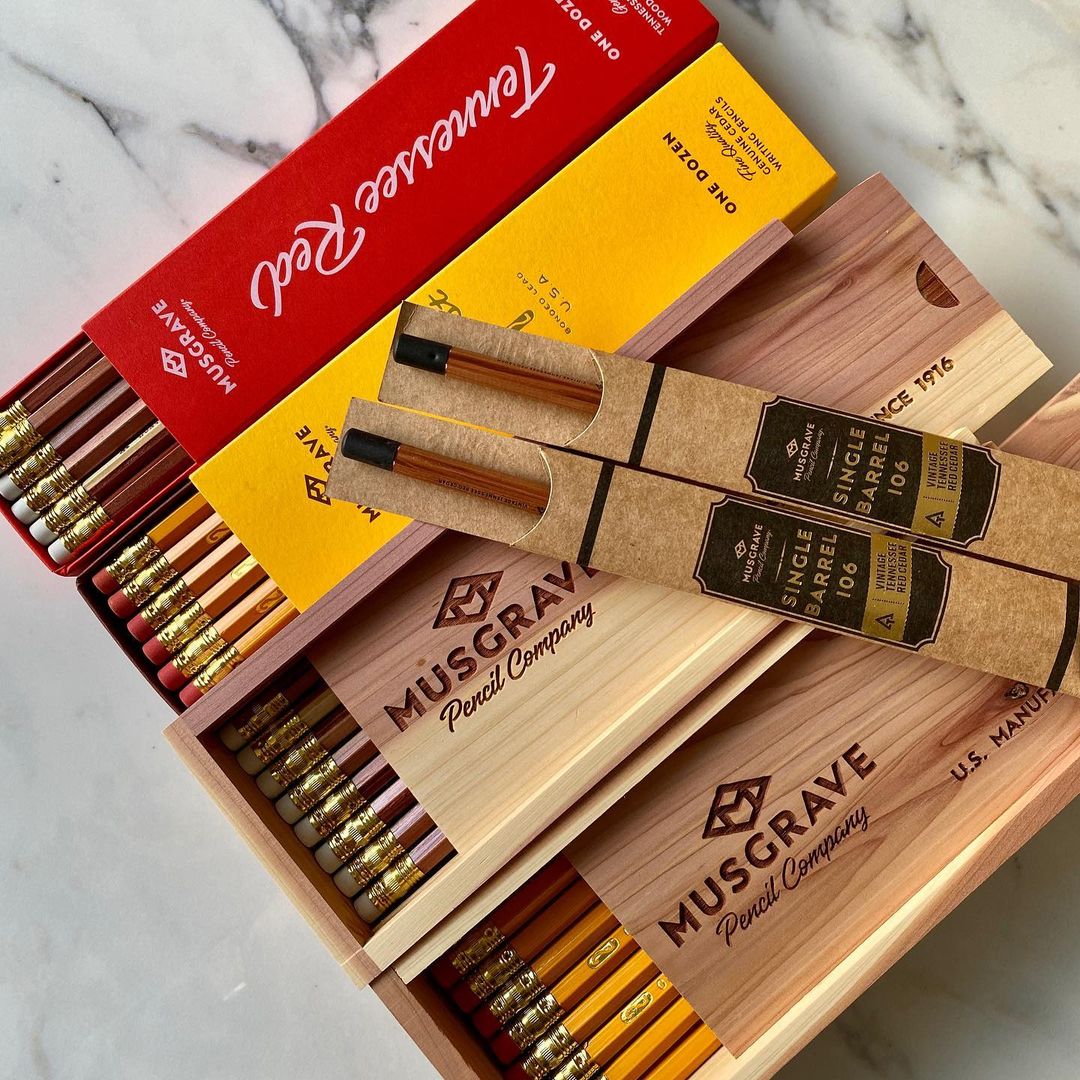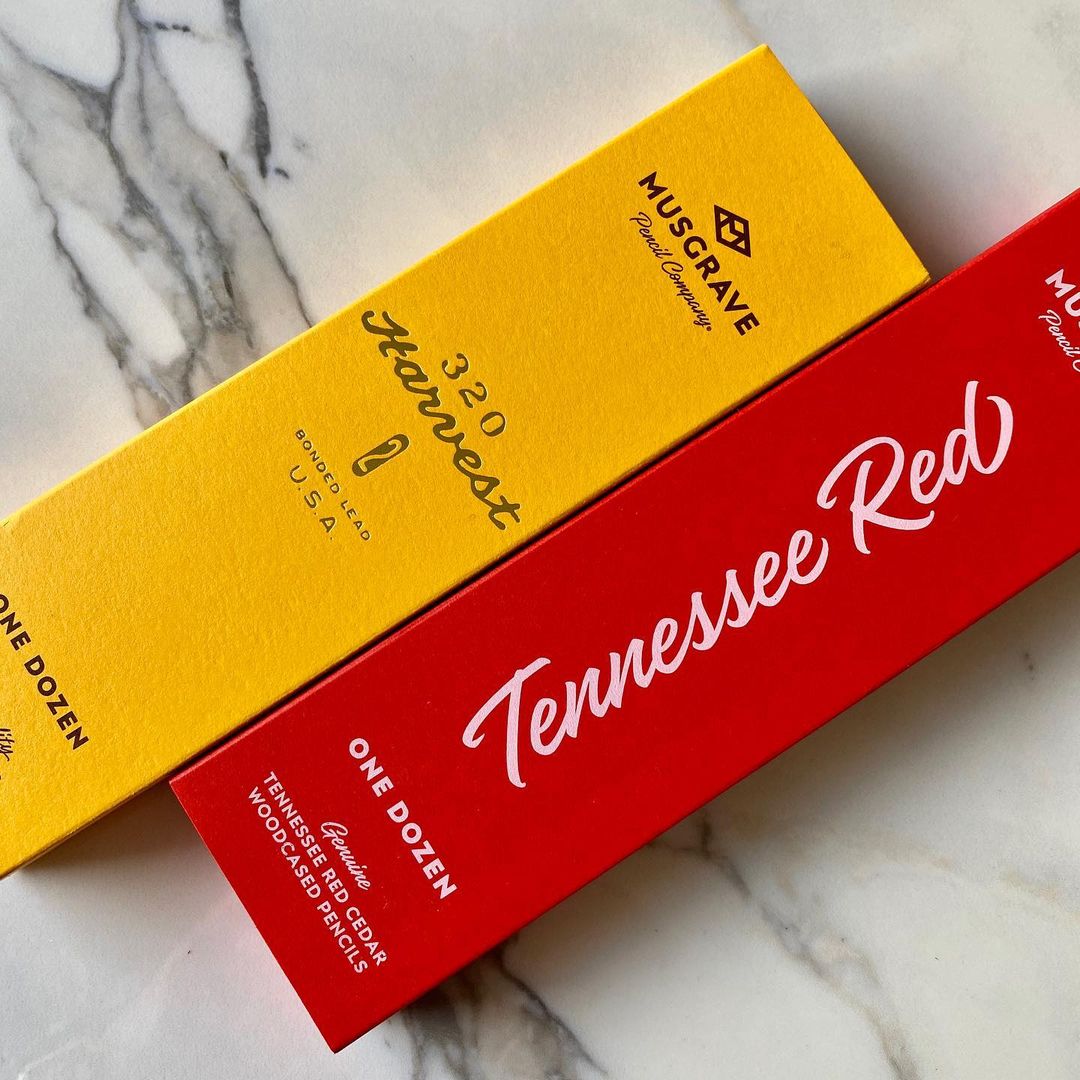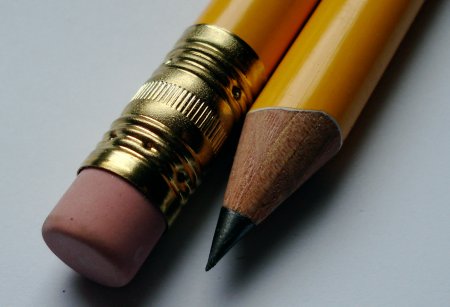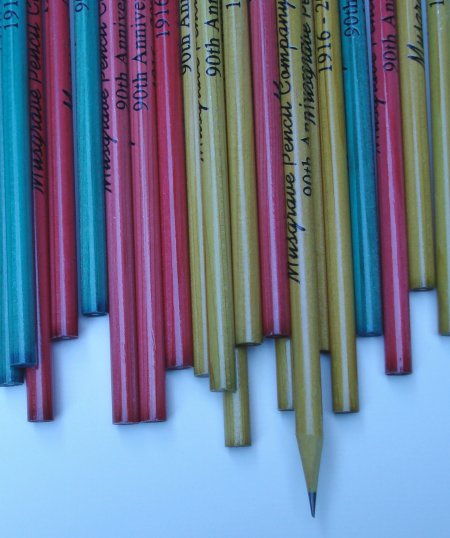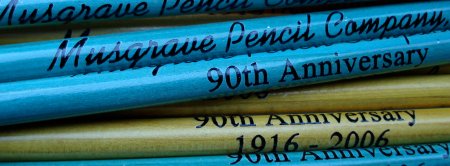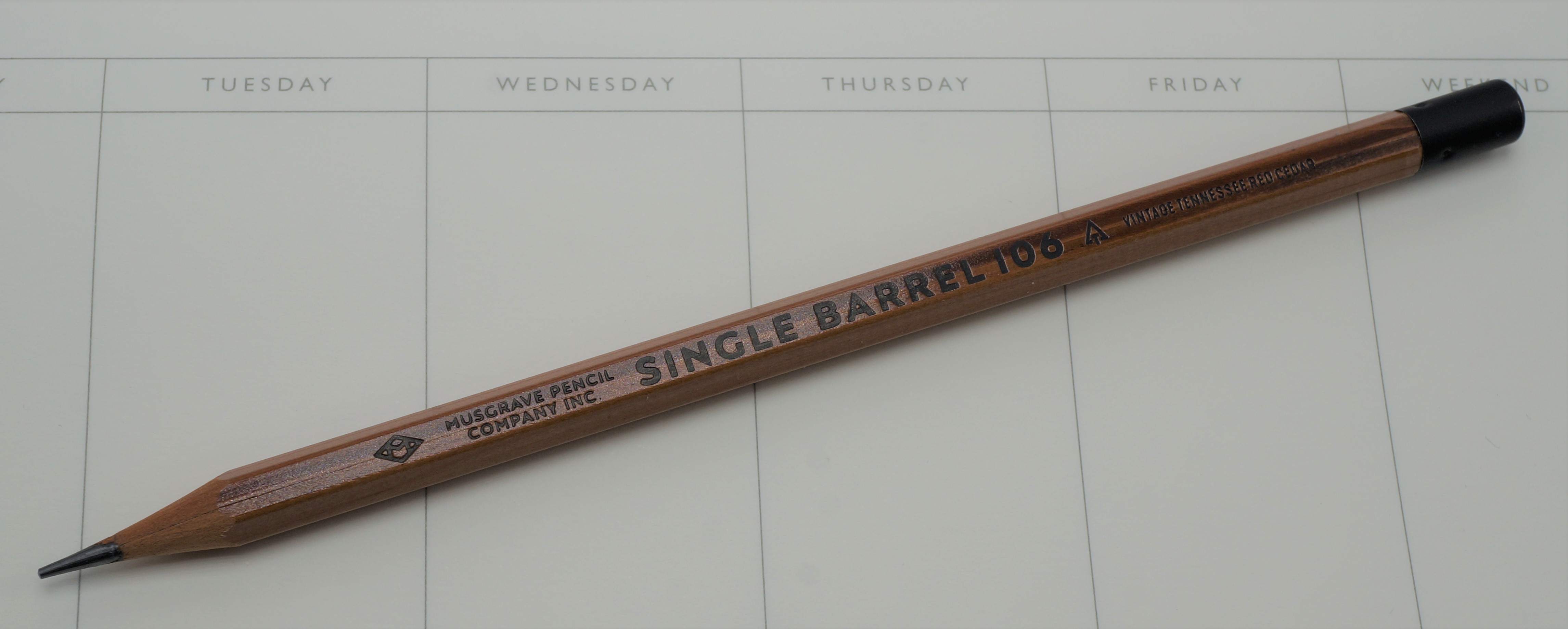
Along with the Tennessee Red, heritage pencil maker Musgrave announced another product just as interesting to pencil aficionados – a pencil made from rediscovered vintage slats.
A bell rang for me when I first heard this, because NYC luxury retailer Mrs John L. Strong (now revived) used a very similar story to market an Eastern Red Cedar pencil just a few years ago. They similarly claimed a secret stash of Eastern Red Cedar. This blog wrote about that pencil in 2009 (coincidentally, beside a note about a layoff at Musgrave). The Mrs. John L. Strong pencil was photographed on page 33 of Marco Ferreri’s book Pencils:
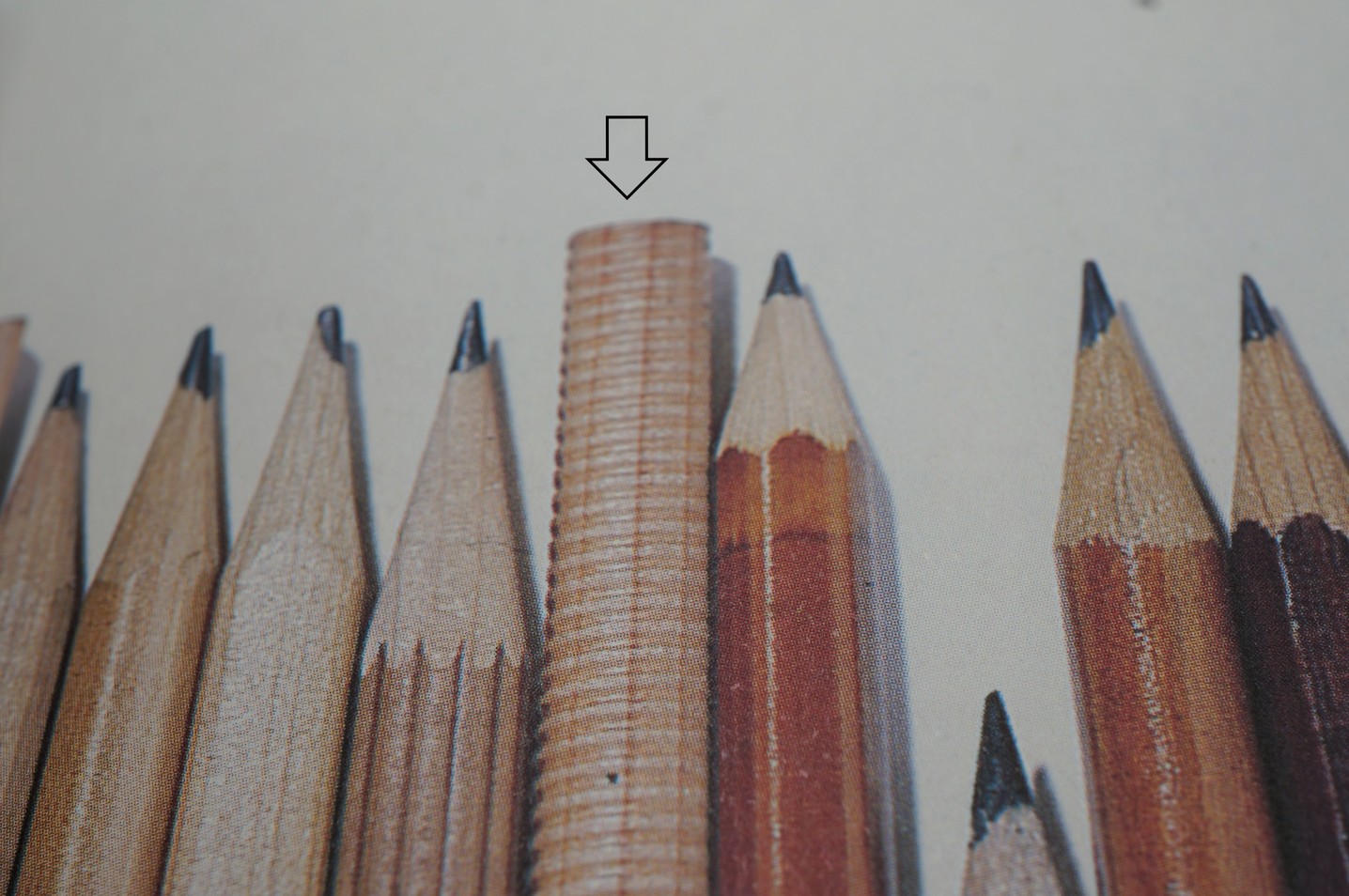
Though regularly mentioned online, I could not find a substantial written review of this pencil, and was motivated to contribute this effort.
The pencil is unsharpened, with a black metal cap. It presents itself with a lacquered dark wood body and a black imprint. The contrast isn’t high, but I think it is appealing. The pencil is offered in a cardboard sleeve.
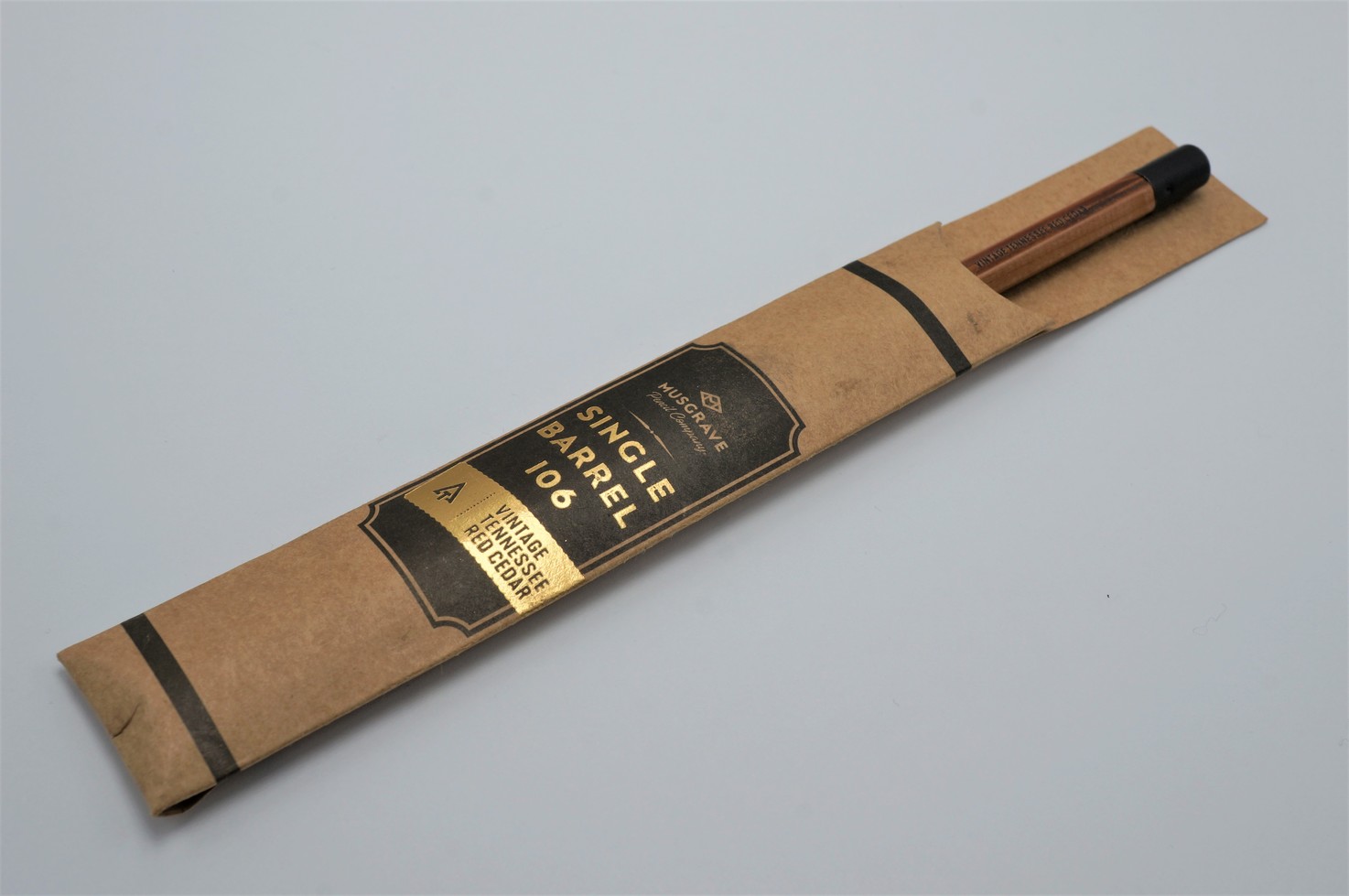
Technically, the lead isn’t off centre between the slats – the issue is more that one slat is twice the height of the other.
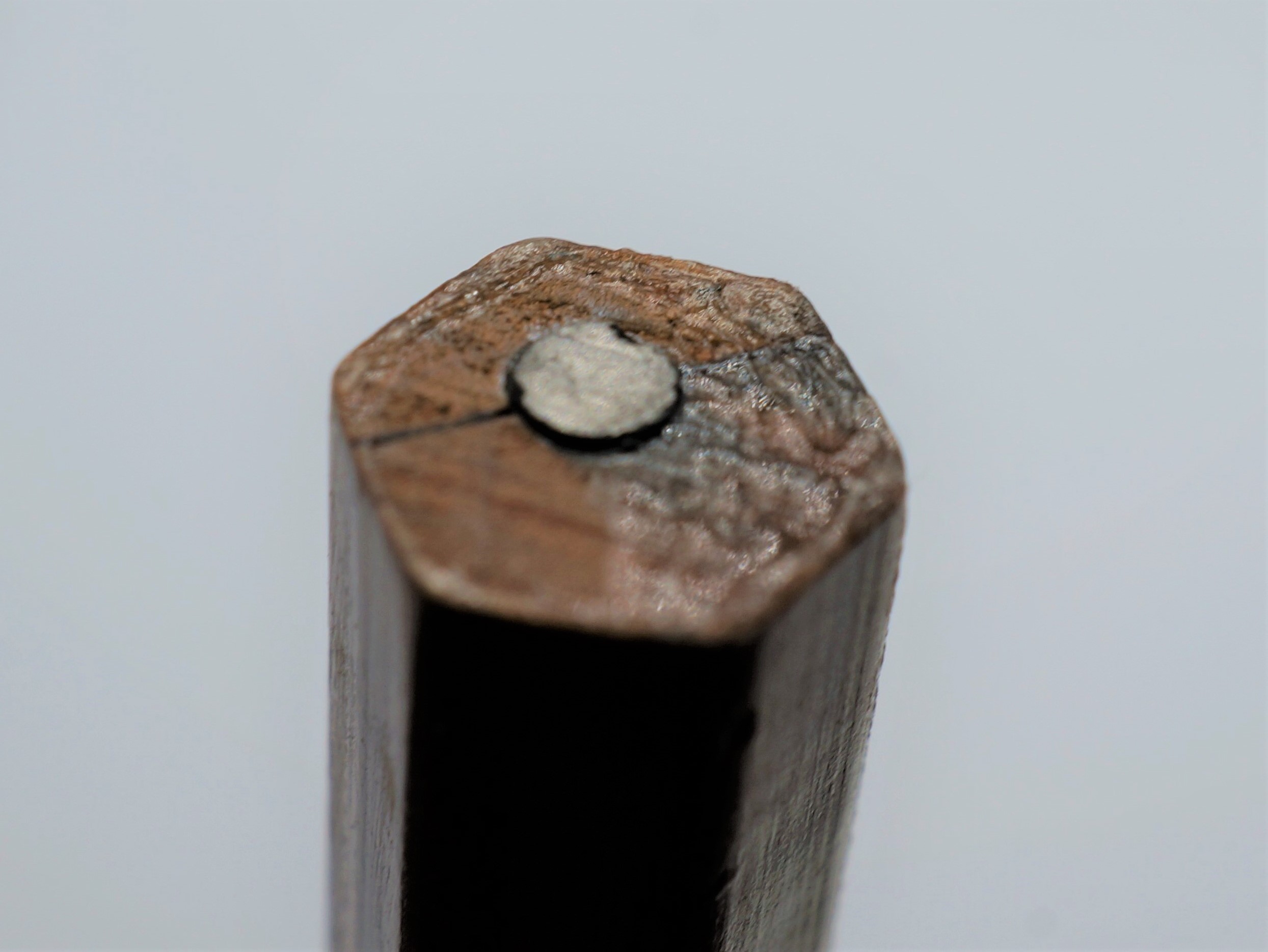
The imprints have a nice aesthetic.
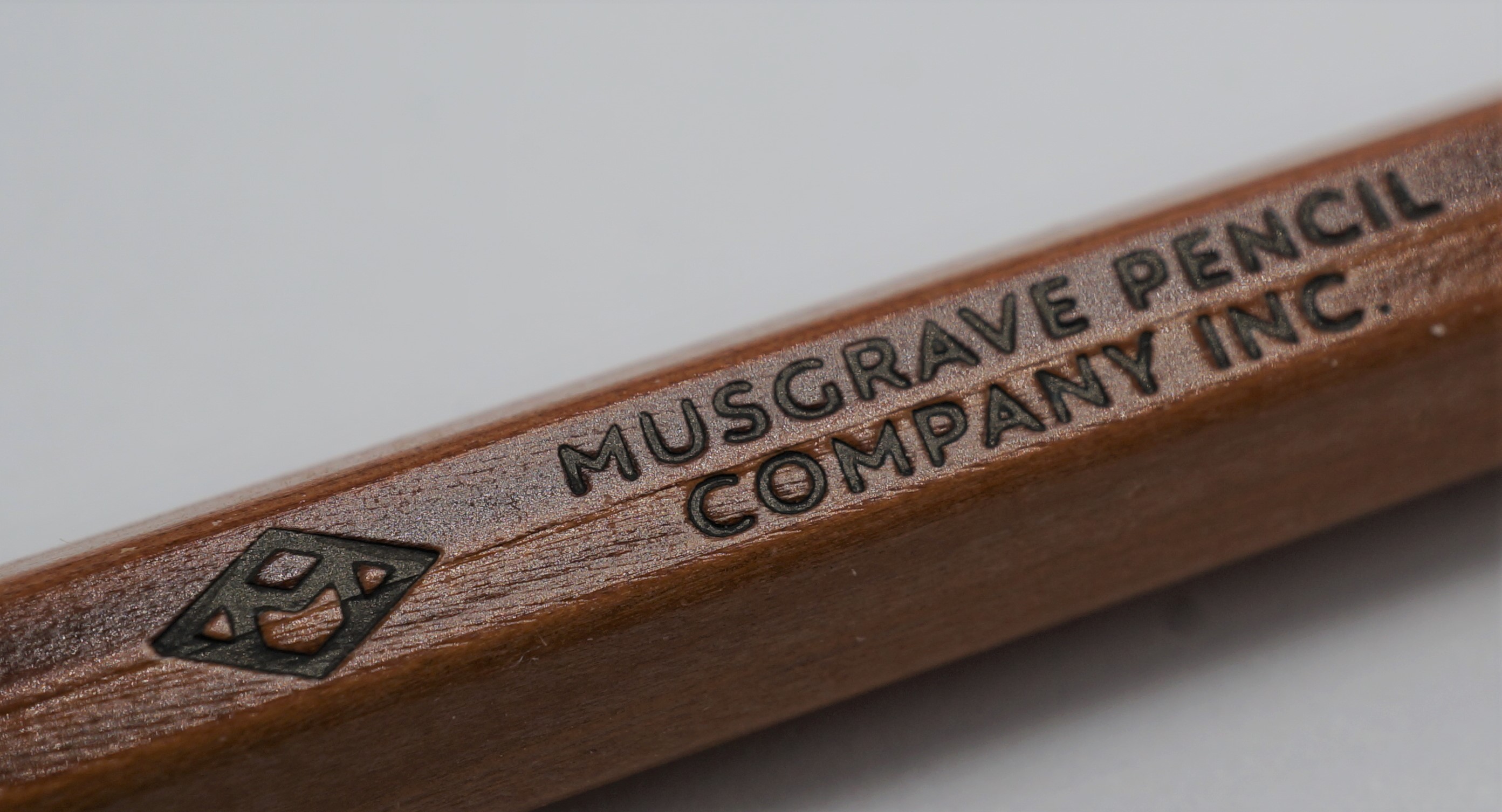
I thought a vintage sharpener might pair well with a vintage wood pencil. I broke out a decades old Eagle sharpener, but the results weren’t great. I tried a quick correction in an M+R 502, but the lead snapped. Did I mention that this is a $US10 pencil? So a dollar down, I felt it was time to get serious, and the impressive El Casco M-430 on the No. 2 (second most blunt) setting did a great job.
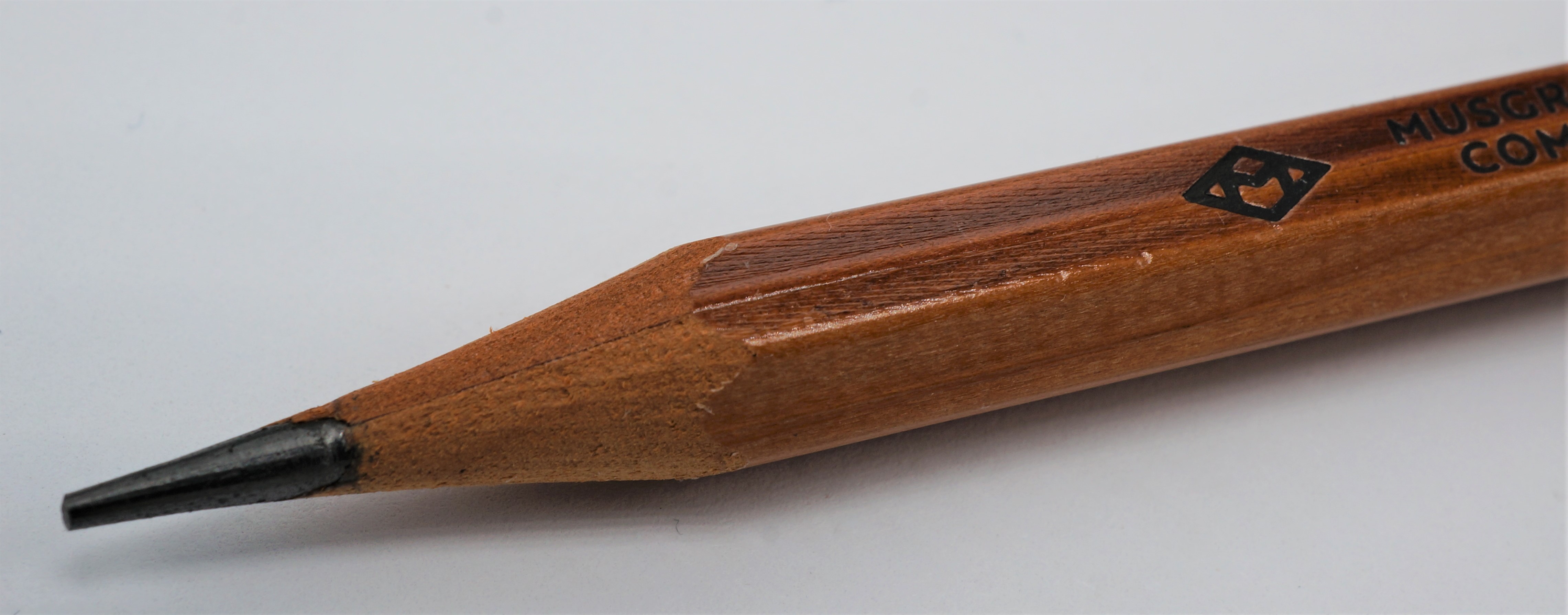
The pencil writes very nicely (the lead seems to be a step up from that of the Tennessee Red), with a dark line, nice glide, and minimal crumbling.
I’d love to know the lead origin. In 2008, a pencil industry CEO commented here that the US manufacturers, with an exception, made their own leads. But given the date, the comment may have applied to the then large US companies – Dixon and Sanford.
To summarize, there are some challenges, but I really like the story of this pencil. Telling me that the slat is 90 years old grants a lot of forgiveness.
I note that just like Mrs. Strong, Musgrave has found a way to sell a pencil at the price point of the Graf von Faber-Castell Perfect Pencil. I’m not a professional marketer, but I salute Musgrave for this breakthrough.
The pencil is gaining some superfans – people purchasing large quantities and sharing photos online, especially since Musgrave lifted a two per customer limit. I am really curious about where this offering may go.


